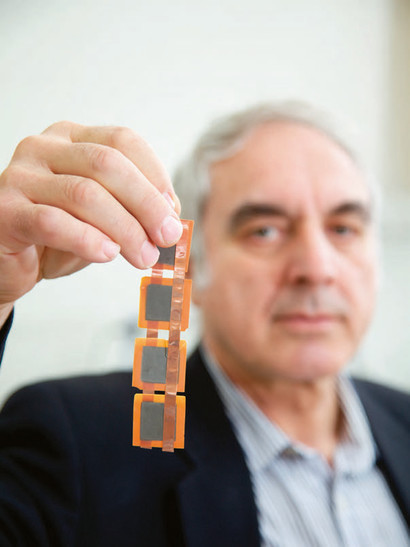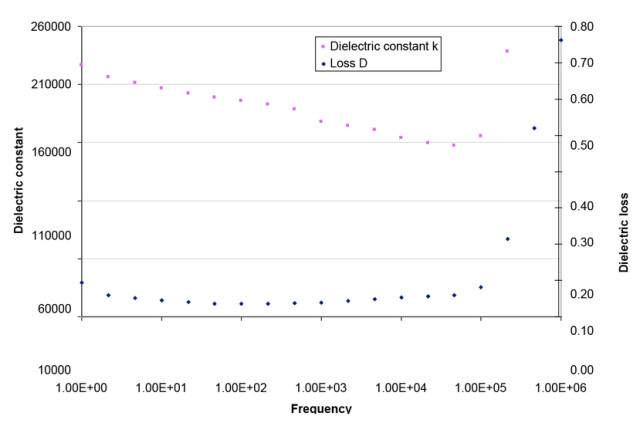
The UltraCap Research Program
According to UltraCap, the prototype battery (when completed) will essentially be a bunch of ceramic dielectric capacitors hooked up together. The company anticipates the final prototype will weigh less than 20 kg (compared to the Model S’s 535 kg for the 70 kWh battery) and deliver five hours of consecutive driving.
The company’s website boasts of a “conclusive three-year research program [original emphasis]” and “extensive academic work” in developing this technology. What follows is, verbatim, the three-phase program they describe:
- The first step centered on the development of bulk capacitor ceramics with high capacitance/dielectric constant to be used as reference materials.
- The second step centered on the development of high surface area ceramics with improved charge storage capabilities.
- The third step will center on the development dielectric films on metal substrate with good adherence to the metal substrate and possessing no pitting or discontinuities responsible for decrease in capacitance. We will use a novel ultrasound technology for mixing and grain refinement.
In addition, the company provides the following graph to demonstrate the “significantly higher dielectric constant [that] was achieved with samples [original emphasis]”.

Pocket-Sized Car Batteries…Maybe
There’s really nothing more to say about the company’s prototype, so I’ll let UltraCap research and development director Vladimir Krstic speak for himself:
"We can make the ceramic di-electric much thinner and lighter without losing electrical capacity and create pocket size car batteries in the near future,” he said. “The technology has the potential to revolutionize the way electrical energy is stored and transported. Due to high energy density and small size, it will be possible to charge the device in all regions of the world where electricity is abundant and inexpensive and then transport it to urban areas where it is needed the most."
This is a fantastic vision, but without more information, many may find it hard to drink UltraCap’s Kool-Aid. FastCAP Systems is another new player in the ultracapacitor game, but unlike UltraCap, FastCAP has proven its technology. The company has already demonstrated its product in the oil and gas industry and has plans to expand to other markets, including EVs.
So it definitely seems as if ultracapacitors could replace standard Li-ion EV batteries, at least at some point in the future, but a timeline is hard to estimate. The sooner the better, as there would be a number of benefits to making the switch.
"Right now, electric car batteries are acid-based, toxic, environmentally-unfriendly and heavy with a limited life span,” said Krstic. “Moreover, charging stations remain scarce. Our UltraCapacitor will significantly reduce the long hours currently required to recharge electric cars. It can endure millions of charging cycles, is fully recyclable and contains no environmentally harmful elements. It paves the way for zero-emission transportation worldwide."
For another take on the possible future of battery technology, check out Better Batteries Might Be Made of Mushrooms.